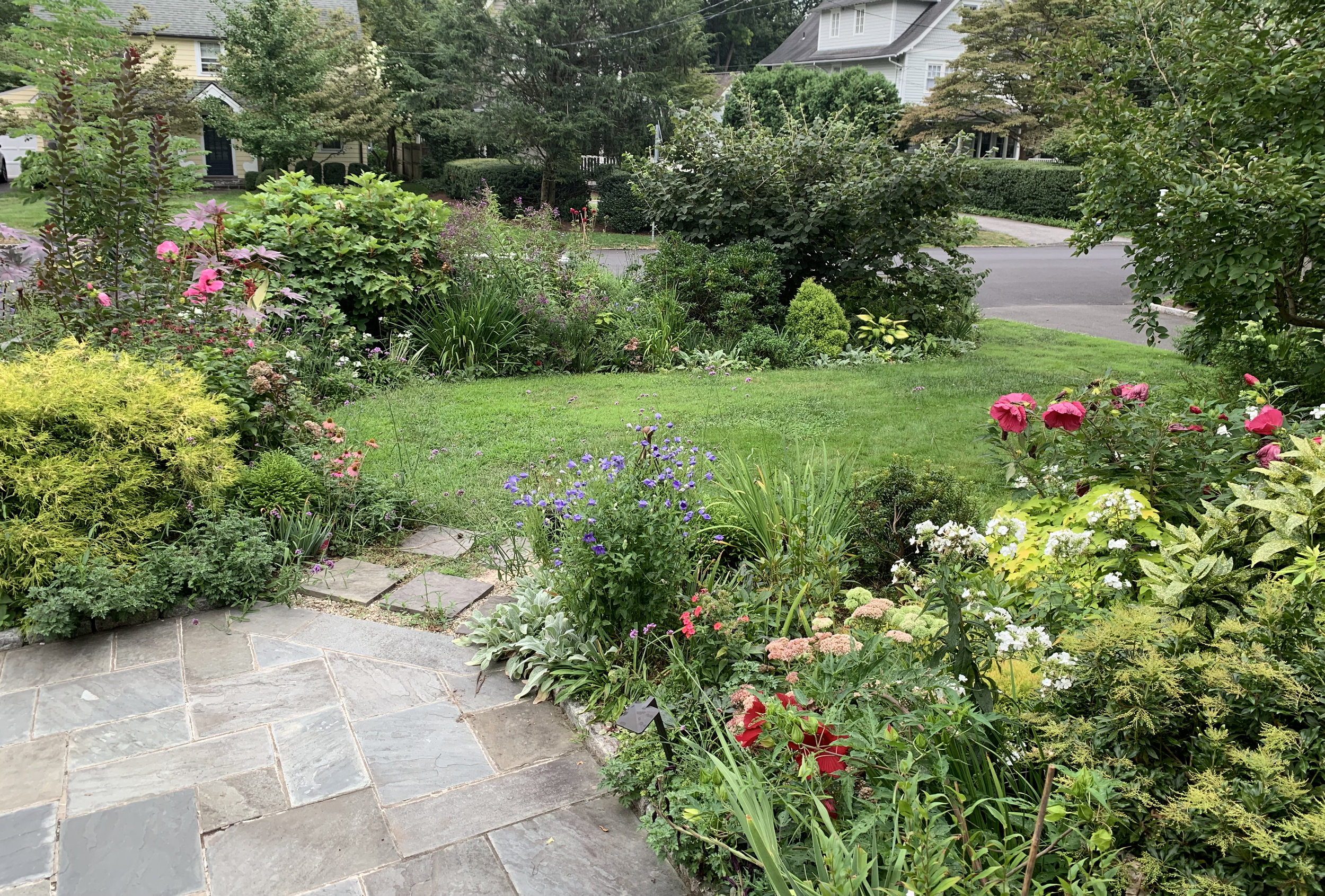My Lawn Sucks and I Don't Care
People either want a “low maintenance lawn” or something that will incite lawn-envy. Fertilizer companies want you to believe that it’s as simple as buying a few bags of seeds and chemicals, while lawn addicts spend countless hours and dollars worrying about sprinkler settings, aeration, and the perfect seeds.
I think lawns are overvalued and your resources should be spent elsewhere.
They are negative space. The perfect lawn is flat and featureless, like painted concrete. Negative space is important in design, but it shouldn’t occupy too much of your brain or wallet. Also, there are other ways to get negative space that are actually interesting, like a pond.
They rarely look that good. They are never perfect, and the perfect parts make the brown spots, low spots, and weeds stick out. Our rocky, acidic clay soil, temperature variations, and huge trees make it almost impossible to achieve the ideal in southern Connecticut.
Small trees in lawns look silly. Either they are surrounded by perfect circles or it looks sloppy. Trees and shrubs dotted throughout the lawn looks particularly bizarre - like a Kusama exhibit that wasn’t installed properly.
They have no “wow factor.” They are the garden equivalent of white bread.
I do. however, care how my garden looks, and the lawn is part of that. At first, I tried to grow a more perfect lawn, but I decided that as far as lawns are concerned - you are either in or out. I was not willing to go all-in, and the efforts that I did make did not improve it enough to be worthwhile. I wasn’t going to apply broad-leaf “weed” killer (they kill ALL broad leaf plants, it cannot tell the difference between plantain and peonies), and I wasn’t going to spend my life plucking dandelions out of the lawn. I was not willing to water it more than I watered my favorite plants, and I wasn’t going to throw money at it.
My front lawn is mostly potentilla (cinquefoil) and white clover. Potentilla (cinquefoil) looks like mini strawberries. It’s evergreen-ish, and it’s pretty dense and can tolerate foot traffic. The clover smells great and it fixes nitrogen in the lawn’s poor soil. In June, they both flower a lot and their small yellow and white blooms make it obvious that my lawn isn’t grass, but that only bothers the lawn fascists. Most visitors don’t really notice what the plants are and several of my neighbors have complimented me on my lawn. That’s because I learned some guidelines that make it easier to have a decent lawn:
Have less lawn. Planting anything around the edge will look more interesting and it will greatly reduce the amount of lawn. If grass has trouble growing in a spot, plant something else there. Grass will never grow in an area that gets constant foot traffic. Hardscape is an expensive solution, but it’s a lot less maintenance.
Lawns should have a definite shape and a well defined edge. Whether it’s a geometric or free-flowing shape, it should look intentional. If it looks like a spike amoeba or a splatter pattern, the eye never relaxes and the lawn looks chaotic. A proper edge can make crabgrass look good, and edging with stone or a low growing plant has the same effect as a good belt.
Growing lawns look better if mown regularly. Weeds grow at different rates and regular mowing keeps everything more uniform.
The patchy green shows that there are several different “grasses” in my lawn.
The shape and the edge make it look better. The grass hasn’t been mowed in a week, so uneven heights don’t help.
My back lawn is an experiment in mowing. Huge trees provide a lot of shade and their roots suck so much moisture that delicate lawn grass always struggles. It never looks good, so when woodland meadows started to become popular, I decided to stop mowing it. I knew it wouldn’t magically transform itself into a sylvan paradise, but I was shocked to see the effect: it looked almost exactly the same! It makes sense, the grass never grew and the soil conditions are as seed friendly as a clay brick. I thought it would grow a least a foot, but the only thing that grows more that a few inches are asian bittersweet seedling, and they are rare enough that pulling them isn’t onerous.
Several plants do very well in the back garden. I have hellebores, hosta, kalmia, hydrangea, Japanese maples, and a whole mess of others. New plants do take longer to become established, but after a little babying they’re fine. So, like any obsessed gardener, I keep on enlarging the beds so I can grow more. Bit by bit I am replacing the “grass” paths with pavers, and the lawn will be limited to an oval near the house and a circle further back. If the lawn ever dies, I will spray paint the ground green.



